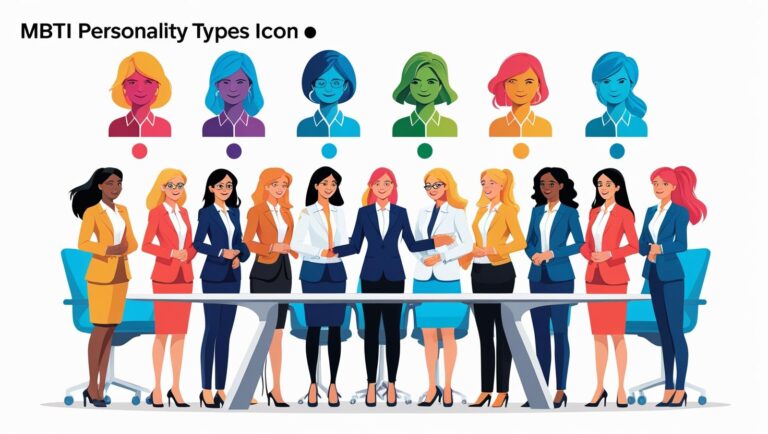Using Myers-Briggs to Improve Team Dynamics and Conflict Resolution
Introduction
Managing teams has always been as much about people as it is about processes. Deadlines, strategies, and targets may drive the work, but it’s personalities, relationships, and communication styles that shape whether a team thrives or struggles. One of the most persistent challenges for managers is handling conflict and navigating clashing personalities. Left unchecked, these differences can erode trust, slow productivity, and create an unhealthy work environment.
This is where the Myers-Briggs Type Indicator (MBTI) becomes more than just a personality quiz. It is a practical framework that helps leaders understand the different ways people communicate, make decisions, and handle stress. By learning how each type naturally operates, managers can improve collaboration, leverage team members’ strengths, and resolve conflicts before they spiral.
This article will unpack how MBTI works, why it matters for workplace dynamics, and how managers can apply it in real-world settings. We’ll also explore exercises that bring these concepts to life and discuss how MBTI can guide conflict prevention, resolution, and long-term leadership strategies.
What is Myers-Briggs and Why Does It Matter?
The Myers-Briggs framework is rooted in Carl Jung’s theory of psychological types. Developed by Isabel Briggs Myers and Katharine Cook Briggs, it categorises people into 16 personality types based on four key dichotomies:
Introversion (I) vs. Extraversion (E): Where you get your energy—from solitude or from social interaction.
Sensing (S) vs. Intuition (N): How you take in information—through facts and details or through patterns and possibilities.
Thinking (T) vs. Feeling (F): How you make decisions—based on logic or on values and empathy.
Judging (J) vs. Perceiving (P): How you approach structure—preferring plans and order or flexibility and spontaneity.
When combined, these preferences create a personality “type,” such as ENFP or ISTJ. Each type reflects a unique combination of strengths, blind spots, and preferred ways of engaging with the world.
Why does this matter for team dynamics? Because in any workplace, these differences influence how people brainstorm, give feedback, approach deadlines, or deal with conflict. A manager who understands MBTI can see beneath the surface of disagreements and use that awareness to improve collaboration.
Understanding Strengths and Collaboration Styles
Every MBTI preference comes with natural strengths—and sometimes frustrations when paired with an opposite style.
Take Extraversion and Introversion. Extraverts thrive in group discussions and often think best by speaking out loud. Introverts, however, prefer reflection and need time to process before contributing. A team heavy on Extraverts may drown out the quiet voices of Introverts, while a team of Introverts may stall when asked to brainstorm spontaneously. A skilled manager balances both by structuring meetings with space for lively debate but also creating channels—like follow-up memos or anonymous polls—for reflective input.
Or consider Sensing and Intuition. Sensors value practical details and proven methods; they want to know what has worked before. Intuitives look for patterns and innovation, asking “what if” and pushing for new approaches. Left unmanaged, Sensors may see Intuitives as unrealistic dreamers, while Intuitives may view Sensors as stuck in the past. A good leader bridges this gap by pairing innovation with practicality: presenting visionary goals alongside concrete, step-by-step plans.
When it comes to Thinking versus Feeling, conflict can escalate quickly if differences are misunderstood. Thinkers pride themselves on logic, fairness, and objectivity. Feelers, on the other hand, prioritise harmony and people’s emotions. In a performance review, for example, a Thinking manager may focus strictly on metrics, while a Feeling employee may walk away feeling undervalued. Managers who learn to blend the two—balancing data-driven feedback with genuine empathy—can avoid unnecessary hurt and improve buy-in.
Finally, there’s Judging and Perceiving. Judgers crave deadlines, structure, and predictability. Perceivers prefer flexibility, freedom, and keeping options open. These differences often show up in project work: the Judging employee may grow anxious when a plan isn’t locked down, while the Perceiving employee may feel micromanaged by strict timelines. The solution lies in compromise—set firm milestones to give Judgers security but allow Perceivers some freedom in how they reach those goals.
Role-Playing to Strengthen Understanding
While theory is helpful, MBTI becomes most powerful when teams actively explore it through practice. Role-playing exercises are particularly effective for making personality differences visible and encouraging empathy.
One activity is the Perspective Swap. Pair up team members with opposite preferences—say, a Thinker and a Feeler—and give them a common workplace conflict, such as how to allocate limited resources. Each person must argue from the other’s perspective. A Thinker might have to focus on values and relationships, while a Feeler must argue strictly from a data-driven standpoint. The debrief afterward often reveals surprising insights about how differently colleagues approach the same situation.
Another useful exercise is Communication Style Practice. In this activity, one person delivers a difficult message—perhaps about a project delay or budget cut—while the rest of the team guesses that person’s MBTI preferences based on their delivery style. The discussion afterward highlights how different communication approaches shape how messages are received, and it reinforces the need to adapt style to audience.
A third activity is the Decision-Making Challenge. Divide the team into mixed groups and present a workplace dilemma, such as whether to invest in a new technology. Observe how Sensors push for facts, Intuitives jump to possibilities, Thinkers weigh logic, and Feelers bring in human considerations. The key takeaway is that robust decisions emerge not from one style dominating, but from blending diverse inputs.
Using MBTI for Conflict Prevention
Conflict often arises not from malice, but from misunderstood differences. Managers who understand MBTI can spot potential friction points early.
For instance, if a Perceiving employee keeps missing deadlines, it may not be laziness—it’s their natural preference for flexibility clashing with a Judging colleague’s need for structure. Addressing this through clear expectations and flexible check-ins can prevent the Judger’s frustration from boiling over.
Conflict prevention also involves transparency. Introducing MBTI during onboarding or team retreats normalises personality differences. When employees understand that colleagues aren’t being “difficult” but are simply wired differently, empathy increases and blame decreases.
Using MBTI for Conflict Resolution
When conflict does occur, MBTI provides managers with a powerful lens for mediation. Instead of framing a disagreement as personal, a manager might explain it as a clash of preferences.
Imagine a project where a Sensor feels an Intuitive teammate is “ignoring the facts,” while the Intuitive feels the Sensor is “killing creativity.” By naming these as Sensing vs. Intuition differences, the manager reframes the conflict as complementary strengths rather than personal failings. The conversation then shifts toward integrating both perspectives instead of picking sides.
Similarly, in emotionally charged disputes, reminding Thinkers to acknowledge feelings or encouraging Feelers to consider objective data can bring balance. The key is to validate each style’s needs while guiding the conversation toward mutual understanding.
Practical Tips for Managers
While MBTI is a useful framework, managers must apply it wisely. The most important rule is to avoid stereotyping. People are more than their four letters, and context, culture, and personal growth all play a role in shaping behaviour. MBTI should be seen as a guide, not a box.
Managers should also combine MBTI insights with real-world observation. A self-identified Introvert may, for example, become more outgoing in familiar settings, or a Judging employee may adopt flexibility when working in a start-up environment. Teams evolve, and personality awareness should evolve with them.
Another effective practice is leading by example. When managers share their own MBTI type and reflect openly on their strengths and blind spots, it models vulnerability and encourages others to do the same. This builds psychological safety, which is critical for honest communication.
Finally, MBTI should not be a one-off workshop. Revisiting it regularly through team-building sessions keeps awareness fresh and reinforces the habit of appreciating differences. Some organisations integrate MBTI check-ins during performance reviews, project kickoffs, or even conflict mediation sessions to keep it practical and relevant.
Why Myers-Briggs Matters for Modern Workplaces
In today’s diverse, fast-moving workplaces, managers need every tool available to strengthen team dynamics. The Myers-Briggs Type Indicator offers a clear, accessible language for understanding and navigating personality differences.
By applying MBTI, managers can:
Build more balanced teams that leverage complementary strengths.
Prevent conflicts by spotting personality-based friction points early.
Mediate disputes by reframing disagreements as differences in style, not character.
Improve communication by tailoring messages to diverse preferences.
Create a culture where individuality is respected and collaboration thrives.
The payoff is significant: smoother team dynamics, less wasted energy on conflict, higher engagement, and ultimately, greater productivity.
Conclusion
The Myers-Briggs framework is far more than a personality assessment—it is a strategic tool for managers who want to harness the full potential of their teams. By understanding the different ways people process information, make decisions, and approach structure, leaders can create an environment where diversity becomes a strength rather than a source of tension.
Through role-playing, proactive conflict prevention, and thoughtful mediation, MBTI principles move from theory to practice. The result is a workplace where people feel seen, valued, and better equipped to work together—even when they disagree.
Investing in MBTI-informed leadership is not about labelling employees—it is about recognising the richness of human differences and learning how to integrate them for the good of the whole team. For managers seeking stronger collaboration, more resilient teams, and healthier conflict resolution, Myers-Briggs is a tool worth embracing.



